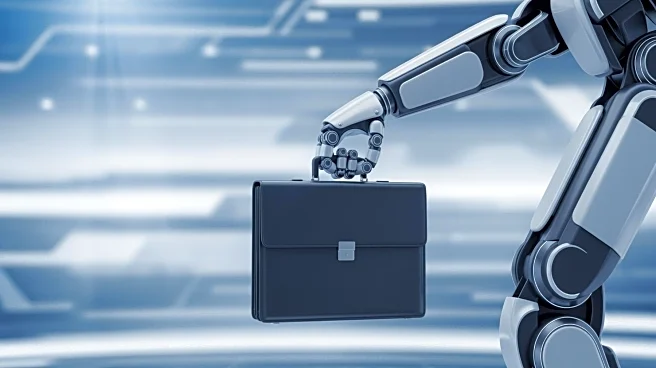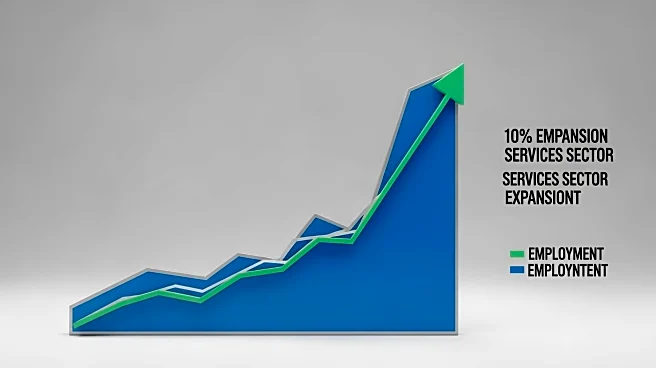What's Happening?
Layoff announcements soared in October as companies recalibrated staffing levels during the artificial intelligence boom, according to outplacement firm Challenger, Gray & Christmas. Job cuts for the month
totaled 153,074, marking the highest level for any October since 2003. The technology sector led the layoffs, with companies announcing 33,281 cuts, nearly six times the level in September. Consumer products and nonprofits also saw significant increases in job cuts. The report highlights the impact of AI integration and economic pressures on employment, as companies face rising costs and softening demand.
Why It's Important?
The surge in layoffs reflects broader economic challenges, including the impact of AI and cost-cutting measures on employment. The labor market slowdown could affect consumer spending and economic growth, with potential repercussions for public policy and political discourse. The absence of official data due to the government shutdown complicates the assessment of economic conditions, leaving stakeholders reliant on private reports. The layoffs could also influence Federal Reserve policy, as the central bank monitors employment trends and adjusts interest rates to mitigate risks. The situation underscores the need for strategic planning to address technological disruption and economic pressures.
What's Next?
As the government shutdown continues, the lack of official economic data may prompt increased scrutiny of private reports like those from Challenger, Gray & Christmas. Companies may continue to announce layoffs as they adjust to AI-driven changes and economic pressures. The Federal Reserve's recent interest rate cuts indicate a focus on mitigating potential risks to employment, suggesting further monetary policy adjustments could be forthcoming. Stakeholders, including businesses and policymakers, will likely monitor the situation closely, assessing the broader impact on the economy and labor market dynamics.
Beyond the Headlines
The integration of AI into various sectors is not only driving layoffs but also reshaping the workforce landscape. While AI offers efficiency gains, it poses ethical and social challenges, such as job displacement and the need for workforce retraining. The long-term implications of AI adoption could include shifts in employment patterns, with new roles emerging alongside the reduction of traditional jobs. Companies and policymakers may need to address these challenges through strategic planning and investment in education and training programs to support workers transitioning to new opportunities.












